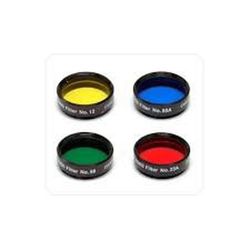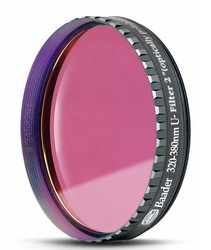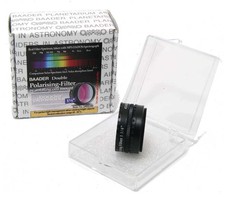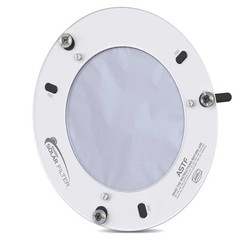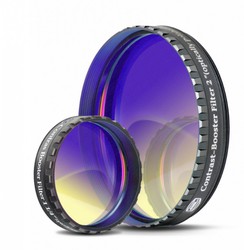1.25 "Baader Color Planetary Filter
Brand: Baader Planetarium
€35.72
Offer:
PVP:
Product sold out, not available at this time.
Next stock entry on the way, expected
Description
Baader's range of planetary filters includes filters of different colors, 1.25 ", which adapt to observation and CCD photography to capture different details of the planets.
Packs that include this product
Details
More information
Astronomical filters for planetary observation and photography are intended to enhance the vision of these stars. They focus on the improvement of contrast and color , to be able to observe details and singularities of the planetary atmosphere, such as spots, disturbances, outer rings, etc ....In this type of filter options of different colors are combined, each one specific for the observation of a type of planet or detail . The most common are Reds, Violets, Greens, Oranges, Yellows and blues.
This range fits 1.25 "astrophotography eyepieces or CCD cameras and includes colors:
Astronomical filters for planetary observation and photography are intended to enhance the vision of these stars. They focus on the improvement of contrast and color , to be able to observe details and singularities of the planetary atmosphere, such as spots, disturbances, outer rings, etc ....In this type of filter options of different colors are combined, each one specific for the observation of a type of planet or detail . The most common are Reds, Violets, Greens, Oranges, Yellows and blues.
This range fits 1.25 "astrophotography eyepieces or CCD cameras and includes colors:
- Green: Improves visibility of CO2 Hoarfrost and ground fog on Mars. Increase the contrast between the red and blue regions on Jupiter and Saturn. Provides the best contrast for Tyco, Copernicus and Kepler lunar craters.
- Yellow: Enhances the contrast between Jupiter's straps. Increases the contrast of the lunar and martian surface
- Orange: Contrast enhancement for lunar and planetary observations at sunset. Improved detection of dark areas on Mars and penetrates the nebulous atmosphere of Mars. Shows more detail in the cloud bands of Jupiter and Saturn. Suitable for daytime observations of the Moon , Mercury and Venus.
- Red: Blue and green lights are almost completely filtered blocking the increasing contrast between light and dark bands on Jupiter and Saturn. Most interesting filter to use to observe the polar layers of Mars. An optimal filter for daily observation of all planets .
- Blue: Planetary in general
- Dark Blue: Planetary in general
1.25 "Baader Color Planetary Filter: Planetary Blue 1,25 "
Blue filter 1.25 "1.25 "Baader Color Planetary Filter: Planetary Orange 1,25 "
Orange filter 1.25 "Comments
There are no opinions yet Be the first to review!
Questions
No questions yet Do you have any doubt?
Best price
Have you seen it cheaper?









